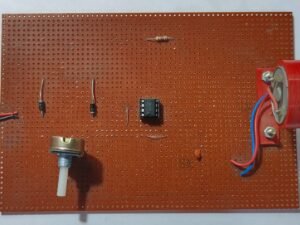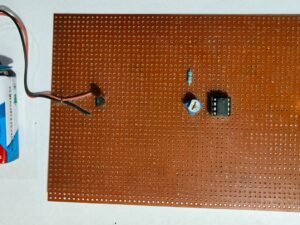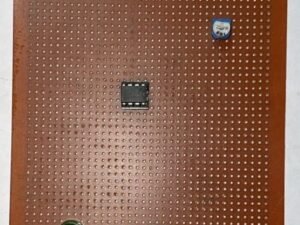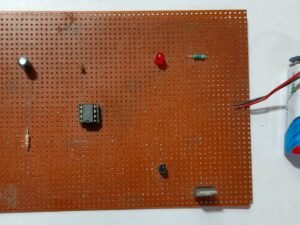Astable Multivibrator using IC555
15 in stock
The Astable Multivibrator using IC 555 creates a continuous square wave output, functioning as an oscillator. Configured with resistors and capacitors, the 555 timer generates a periodic signal used for applications like blinking LEDs or generating clock pulses. This project demonstrates the timer’s capability to produce adjustable frequency waveforms.
₹295.00 ₹531.00 (Incl. GST)
15 in stock
Astable Multivibrator Using IC 555
The Astable Multivibrator using IC555 is a fundamental electronic circuit used to generate continuous square wave signals without the need for external triggering. By utilizing the IC 555 Timer, this circuit can create oscillations of specific frequency and duty cycle, which are useful for various applications such as signal generation, pulse width modulation, and clock pulses for digital circuits.
Components Needed
- IC 555 Timer: The central component for generating the square wave signal.
- Resistors: Typically, two resistors are used to set the timing parameters (e.g., 1kΩ and 10kΩ).
- Capacitor: A capacitor (e.g., 10µF) to define the frequency of oscillation.
- PCB (Printed Circuit Board): For a compact and durable assembly.
- Power Supply: 5V DC to power the circuit.
How It Works
In the astable mode, the IC 555 operates as a free-running oscillator. It continuously switches between high and low states, creating a square wave output. The frequency of oscillation and the duty cycle of the output waveform are determined by the values of the resistors and capacitor connected to the IC.
- Timing Resistors (R1 and R2): These resistors, connected between the supply voltage and the discharge pin of the IC, control the charge and discharge times of the capacitor.
- Timing Capacitor (C1): Connected between the discharge pin and ground, this capacitor charges and discharges according to the timing resistors, setting the frequency of the oscillation.
Assembly
To assemble the circuit, place the IC 555 and other components on a PCB. Connect the resistors and capacitor according to the astable mode configuration. Ensure proper power supply connections and secure all components.
The Astable Multivibrator Using IC 555 is a versatile circuit, providing a stable and adjustable frequency output, useful in a wide range of electronic applications.
| Weight | 0.00 kg |
|---|---|
| Dimensions | 0.00 × 0.00 × 0.00 cm |





